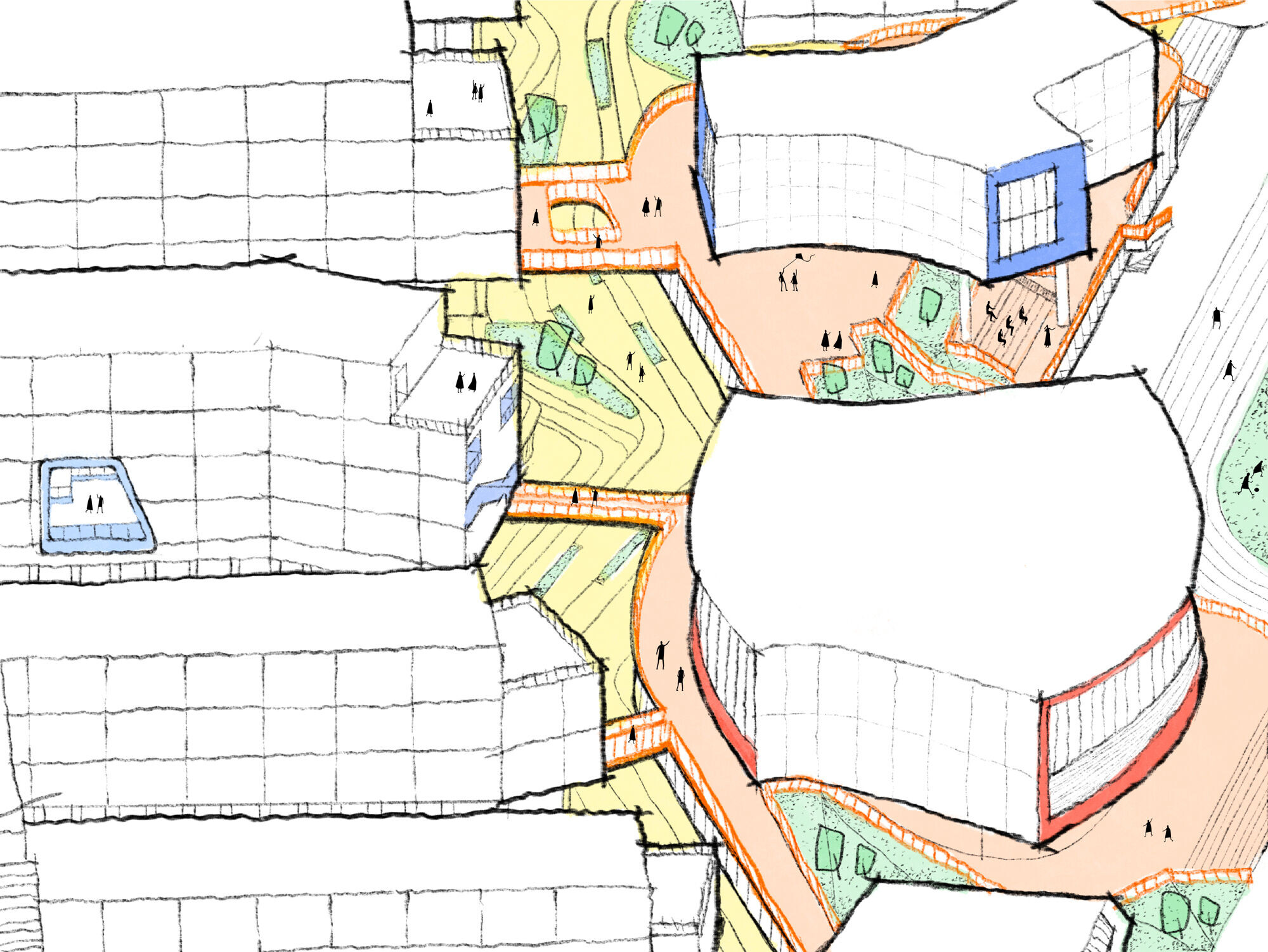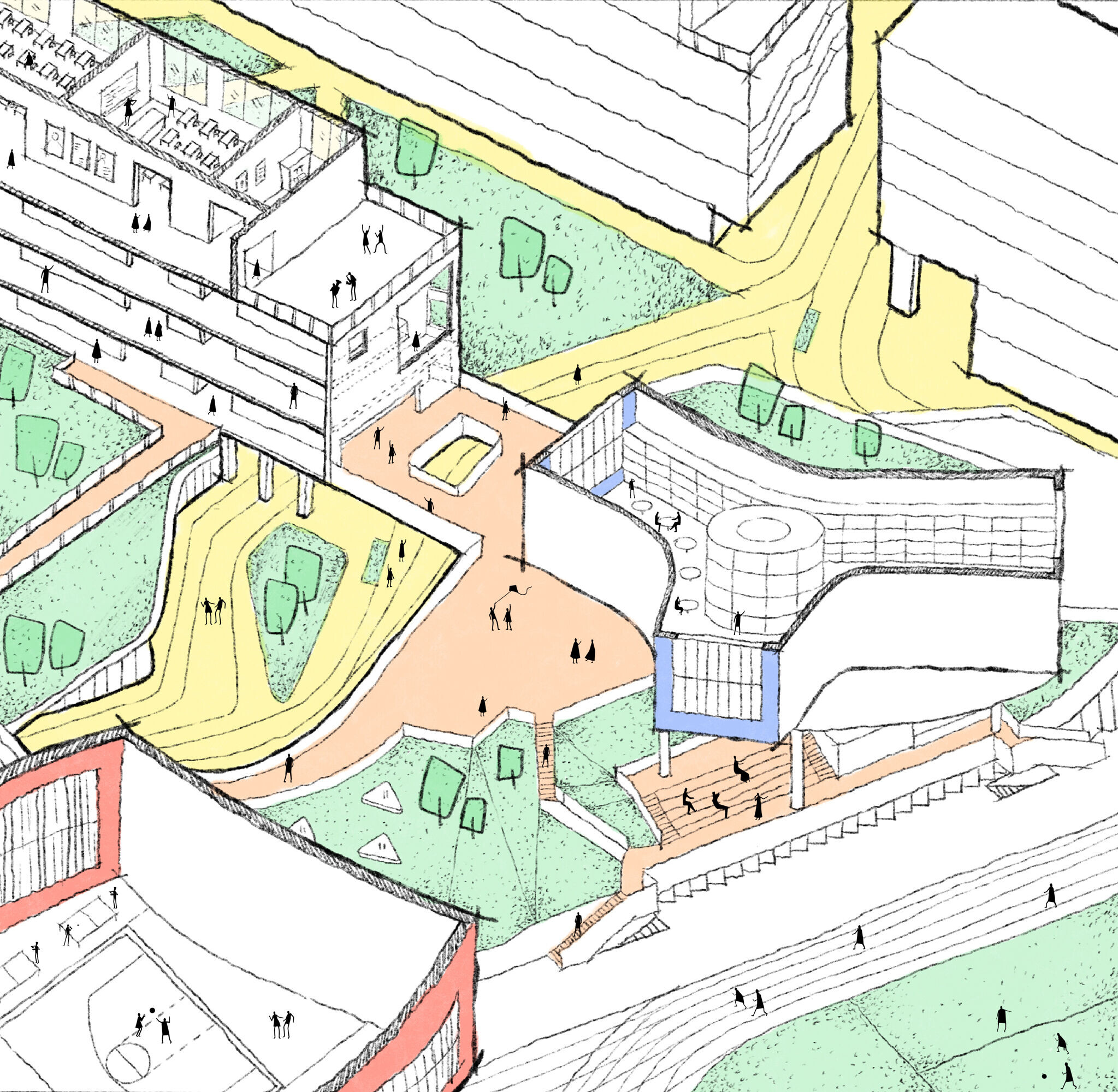Encounter on a Campus Street, Quzhou No.6 Experimental School | LYCS Architecture Work
The Quzhou No.6 Experimental School is designed by LYCS Architecture. Located on Changshan Road in Quzhou’s High-Speed Rail New Town, the campus spans approximately 67,500 square meters. It is a comprehensive educational complex accommodating a 36-class primary school and an 18-class middle school.
Traditional school campuses are often composed of plazas, courtyards, and roads with clearly defined boundaries. However, as educational philosophies evolve, teaching models shift from teacher-centered instruction to student-driven learning. A single classroom can no longer accommodate the diverse spatial needs of contemporary education. The core design goal of this project is to create an open and flexible campus environment that encourages observation, exploration, and communication among students—ultimately fostering a vibrant atmosphere for learning.

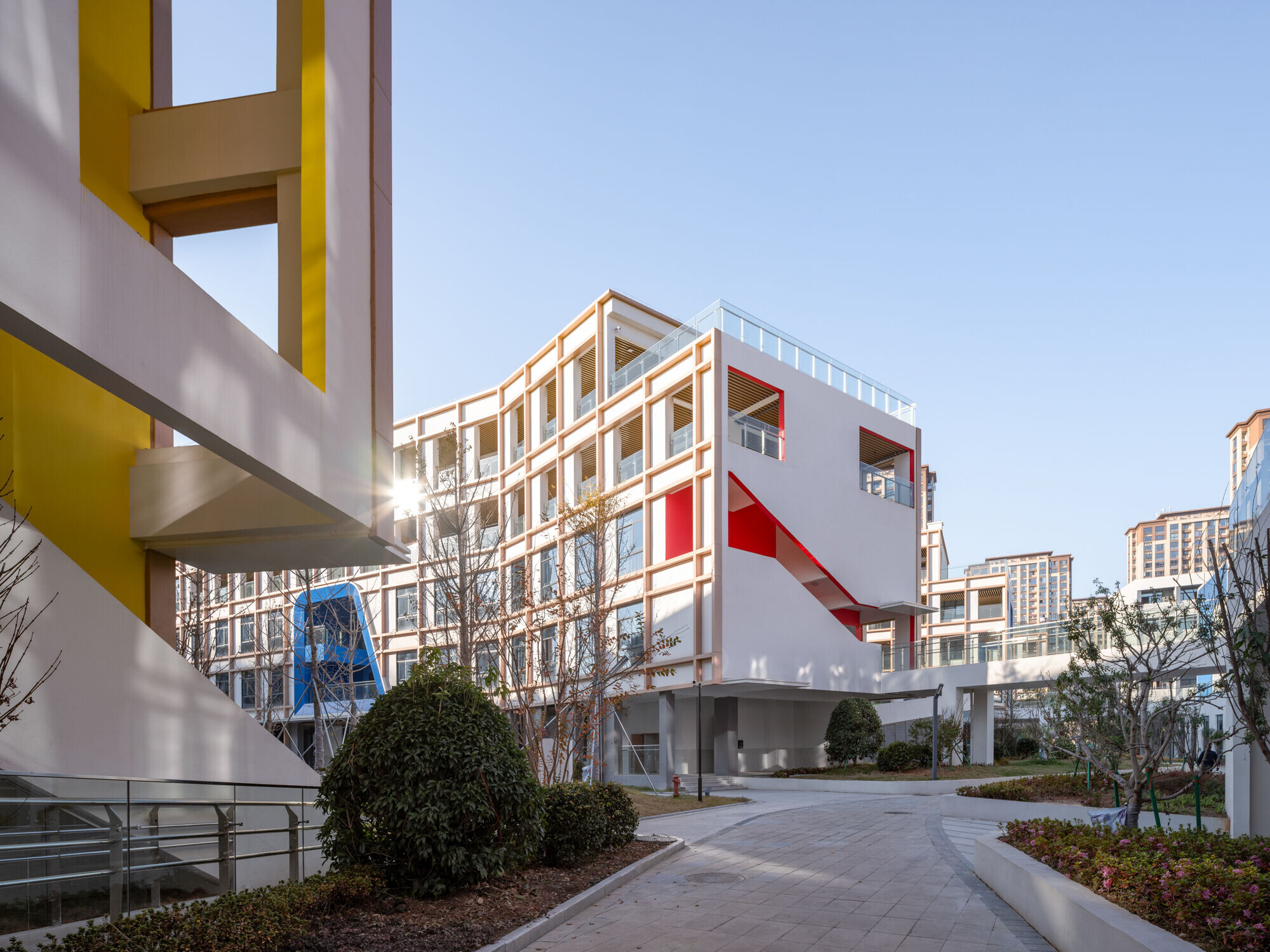
The Diverging Tree of Growth
The design departs from conventional educational spaces by introducing creative public areas guided by the concept of a “Tree of Growth.” In this metaphorical framework, teaching spaces represent the roots, hybrid spaces form the trunk, and innovation spaces correspond to the canopy—comprising flowers, branches, and leaves. These elements are organized along a west-to-east axis, shaping the overall spatial structure of the campus.
In addition, the campus features a variety of public and semi-public spaces in different scales—pocket parks at classroom entrances, gable-end alcoves at the end of corridors, and a central cluster of large-scale venues for cultural and sports activities. These spaces respond to different rhythms of school life, from in-between class breaks to during-class interactions and after-class gatherings.Connected by streets and corridors, they enrich the traditional teaching spaces with new functions, transforming them into future-oriented environments that support innovation and self-directed learning.
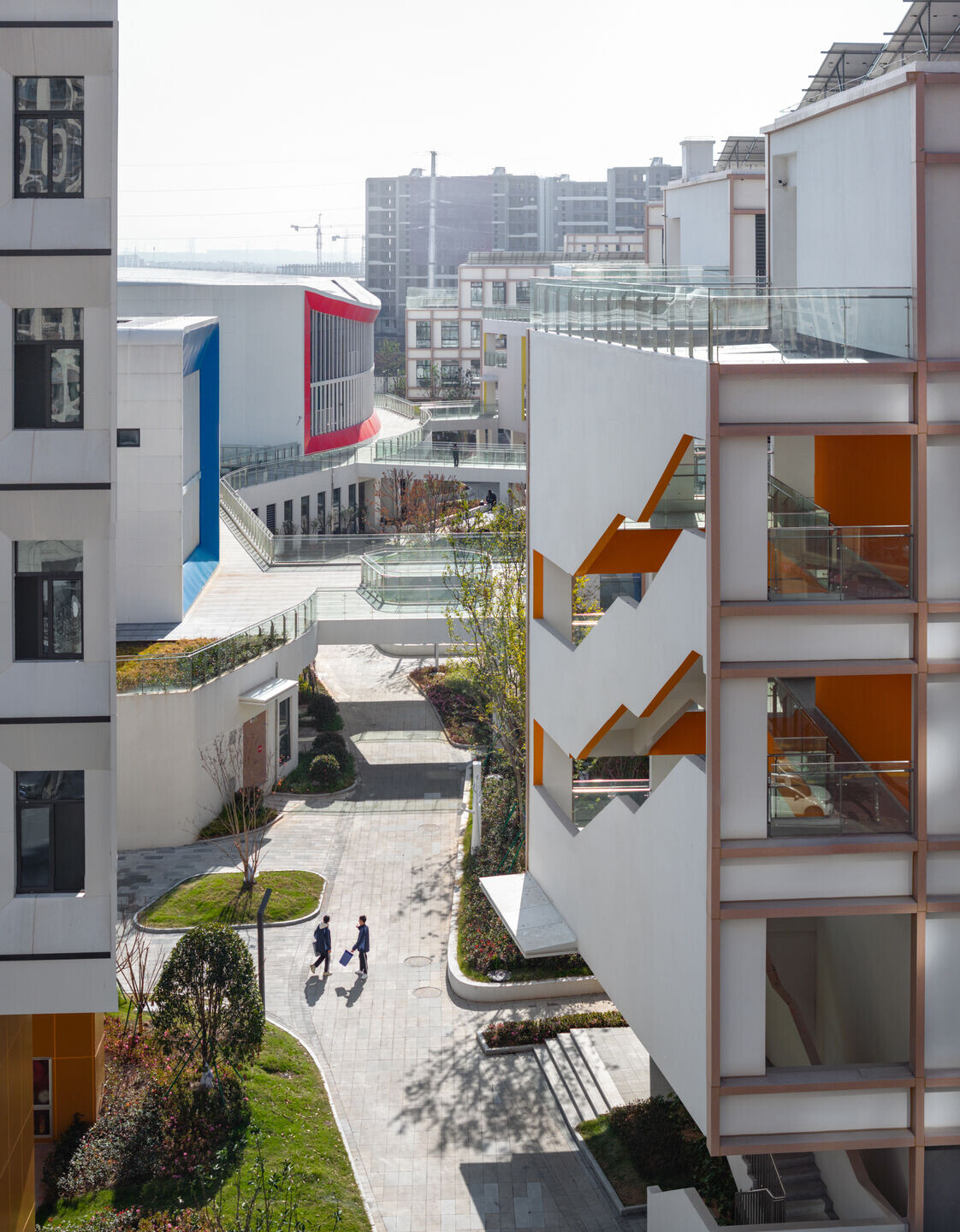
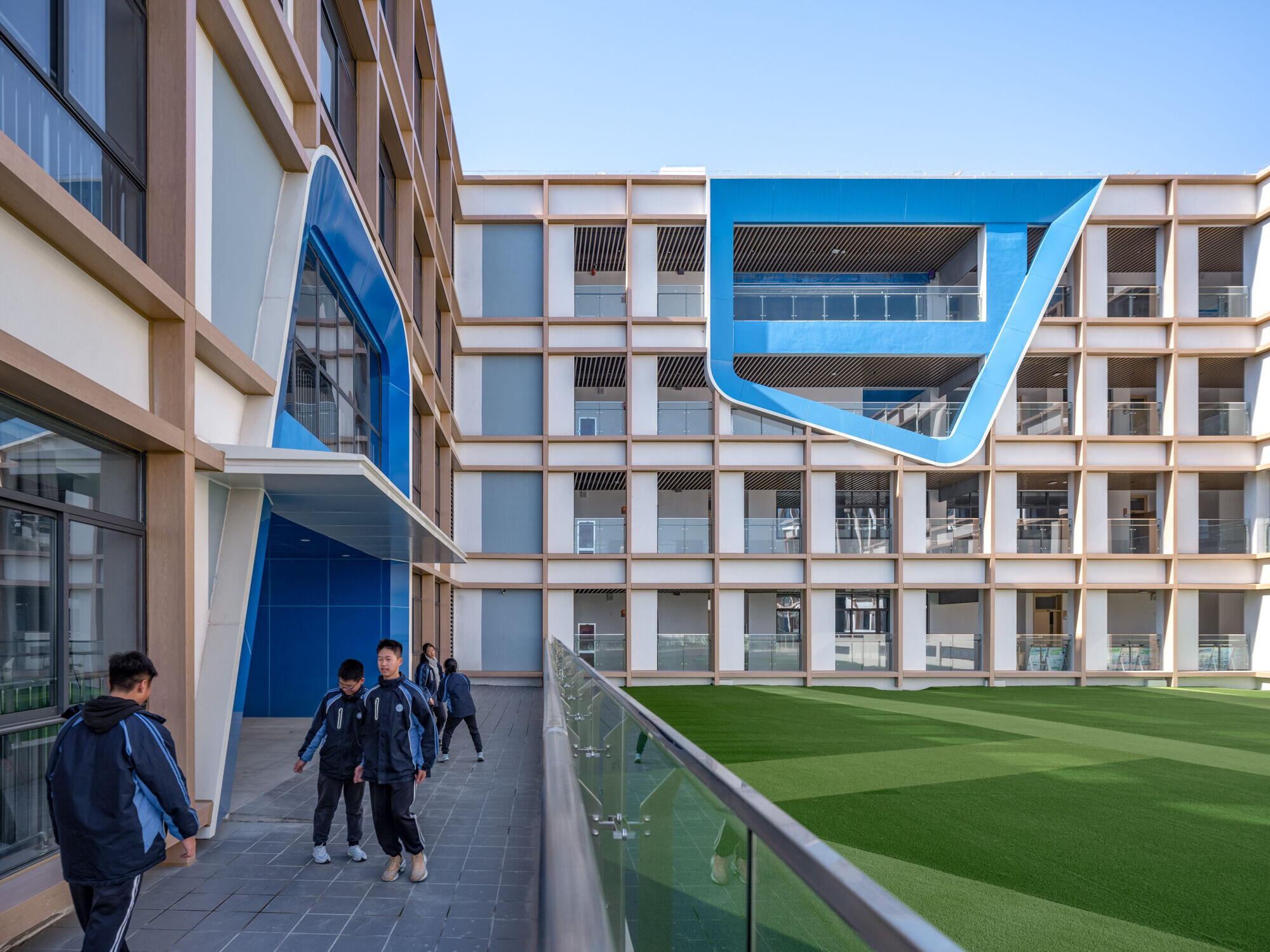
Unexpected Encounters Along the Campus Streets
The design introduces the concept of a “street” as an organizing element between the traditional teaching spaces, hybrid spaces, and innovation spaces. A meandering main street and secondary paths that navigate level changes weave through the campus and connect its functional zones. This spatial system fosters a rich and diverse campus experience, encouraging interaction, movement, and a sense of discovery throughout daily school life.
Running from south to north, a winding main street forms the central axis of the campus, stitching together the entire site. As one moves along the route, the scenery shifts continuously—lush landscaped public spaces, playful gable-end façades, and layered courtyard environments unfold one after another. More than just a circulation path, this street connects the three core zones of the campus: education, arts and humanities, and communal gathering. It also offers students opportunities to observe, explore, encounter, and connect—along the familiar paths and everyday corners of campus life.
Extending from west to east, a series of secondary paths connect various spatial elements—semi-enclosed courtyards, sunken gardens, and elevated walkways—leading toward the campus’s cultural and athletic center. These routes not only guide circulation, but also create layered intersections at varying scales throughout the journey.

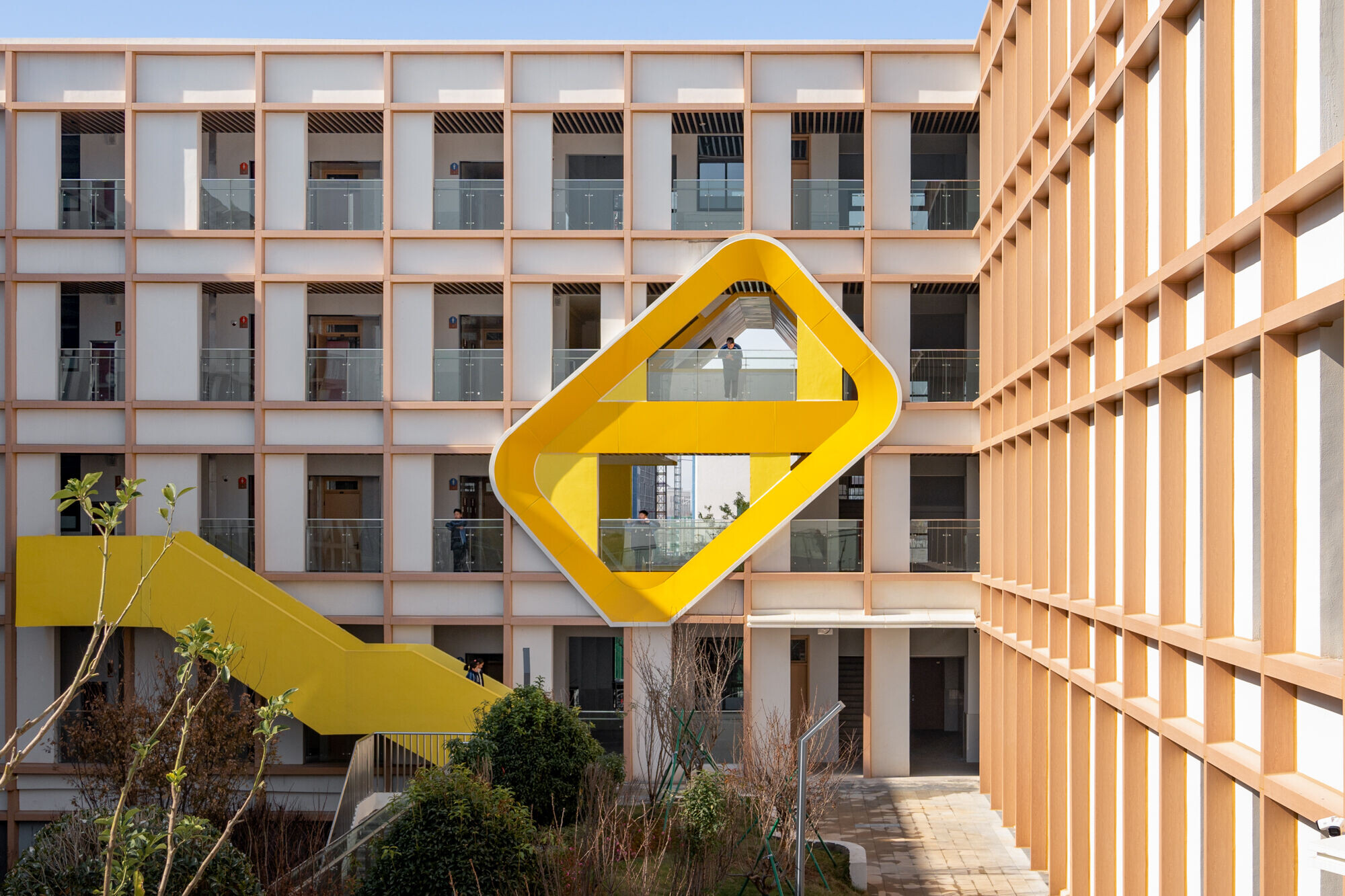
Mini pocket gardens at the classroom threshold
On one side of the main campus street, the teaching area comprises two “E”-shaped academic clusters. The gable-end façades of these buildings are designed as spatially “thickened” terminal volumes, ingeniously integrating single-flight and double-flight staircases that connect rest platforms and transitional spaces. At the top, these volumes open up into rooftop terraces; at the base, they form sheltered, open-air entrances. Through contrasts of solid and void, the use of color, and variations in form, the design enhances the visibility and identity of these terminal spaces—establishing them as key markers along the campus street.
In addition, “sky pocket parks” extend the idea of the campus street into the upper levels of the teaching blocks. Scattered between buildings, these informal learning spaces vary in theme, form, and color. They foster interaction and exploration while bringing vibrancy and playfulness to the everyday circulation between blocks.
The teaching area forms a rhythmic spatial sequence of “terminal space – corridor – sky pocket park,” embedding opportunities for interaction and learning throughout the campus experience.Through staggered floor plates and strategic program placement, they create a multi-layered system of semi-open “grey spaces,” where students can spontaneously engage in conversation, discussion, performances, or hands-on activities as part of their daily movement through the campus.
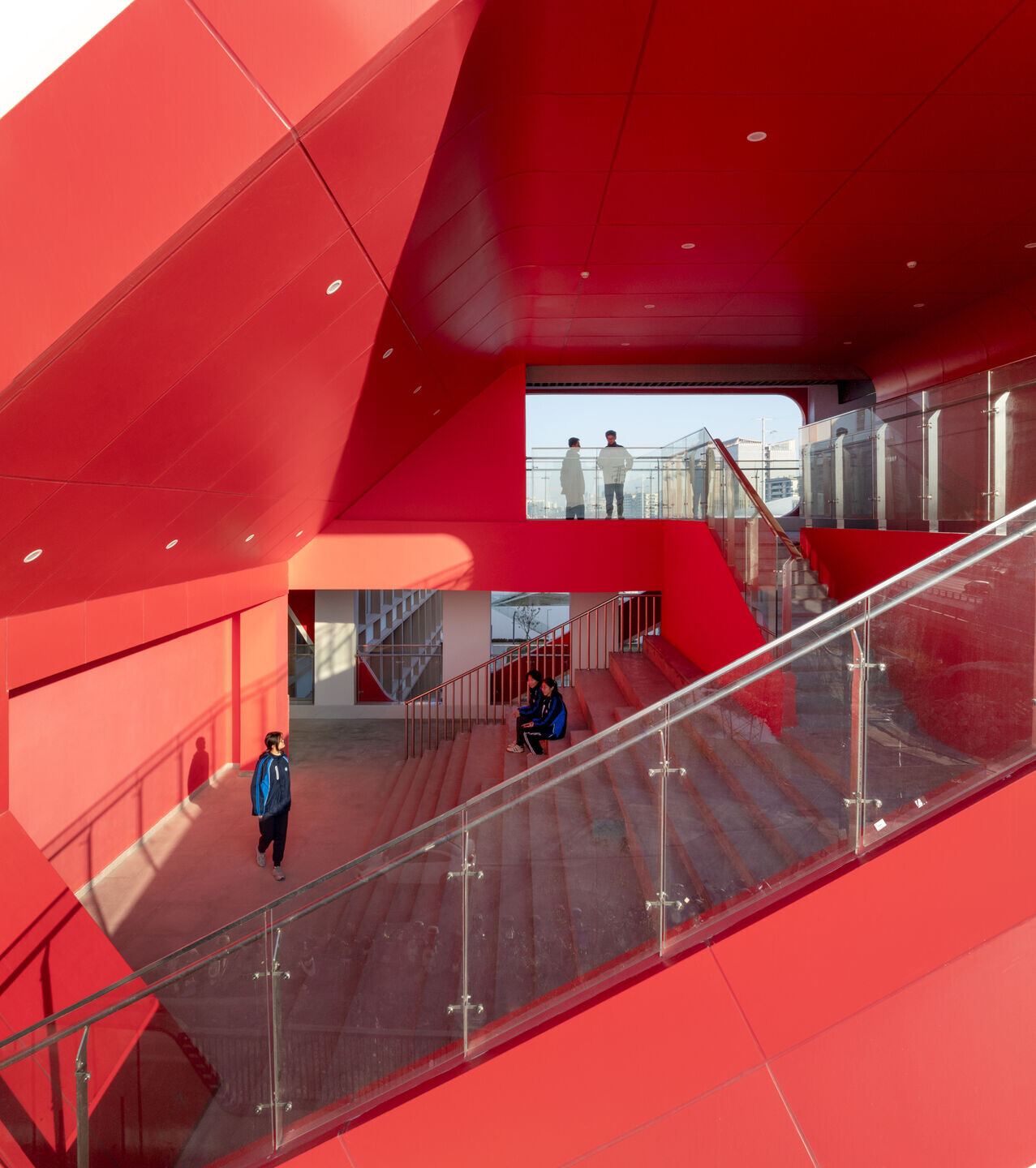
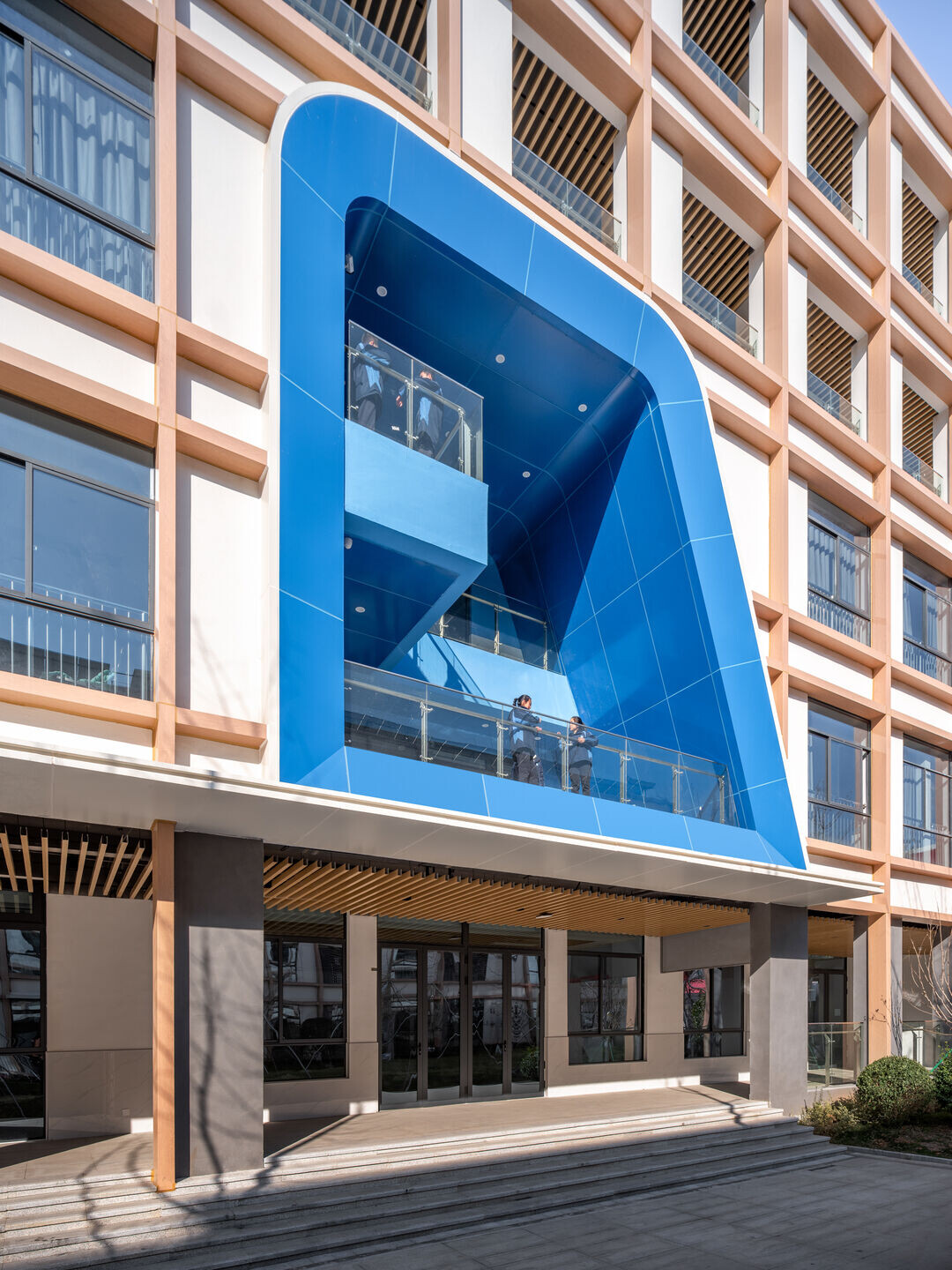
A Playful Cluster of Culture and Sports
On the opposite side of the campus’s main street lies the Cultural and Sports Center—a collection of four volumes, each varying in size, shape, and character. Playfully scattered across a landscaped slope, these buildings offer children a dynamic environment where they can move freely, interact with one another, and engage in a wide range of activities.
The landscape design resolves the site’s vertical elevation changes and integrates a wide range of cultural and athletic functions. The undulating terrain creates a seamless transition between the teaching area and the sports field, shaping a vibrant and playful campus landscape for students to explore and enjoy. It expands the boundaries of student activity and encourages more spontaneous outdoor interaction.
The “Grand Steps” is a transitional zone between the sports field and the Cultural and Sports Center, accommodating daily circulation, flag-raising ceremonies, and other routine functions. Enriched by the surrounding sloped landscape, this area also becomes an ideal setting for choral performances, reading sessions, casual workouts, and various spontaneous student activities.
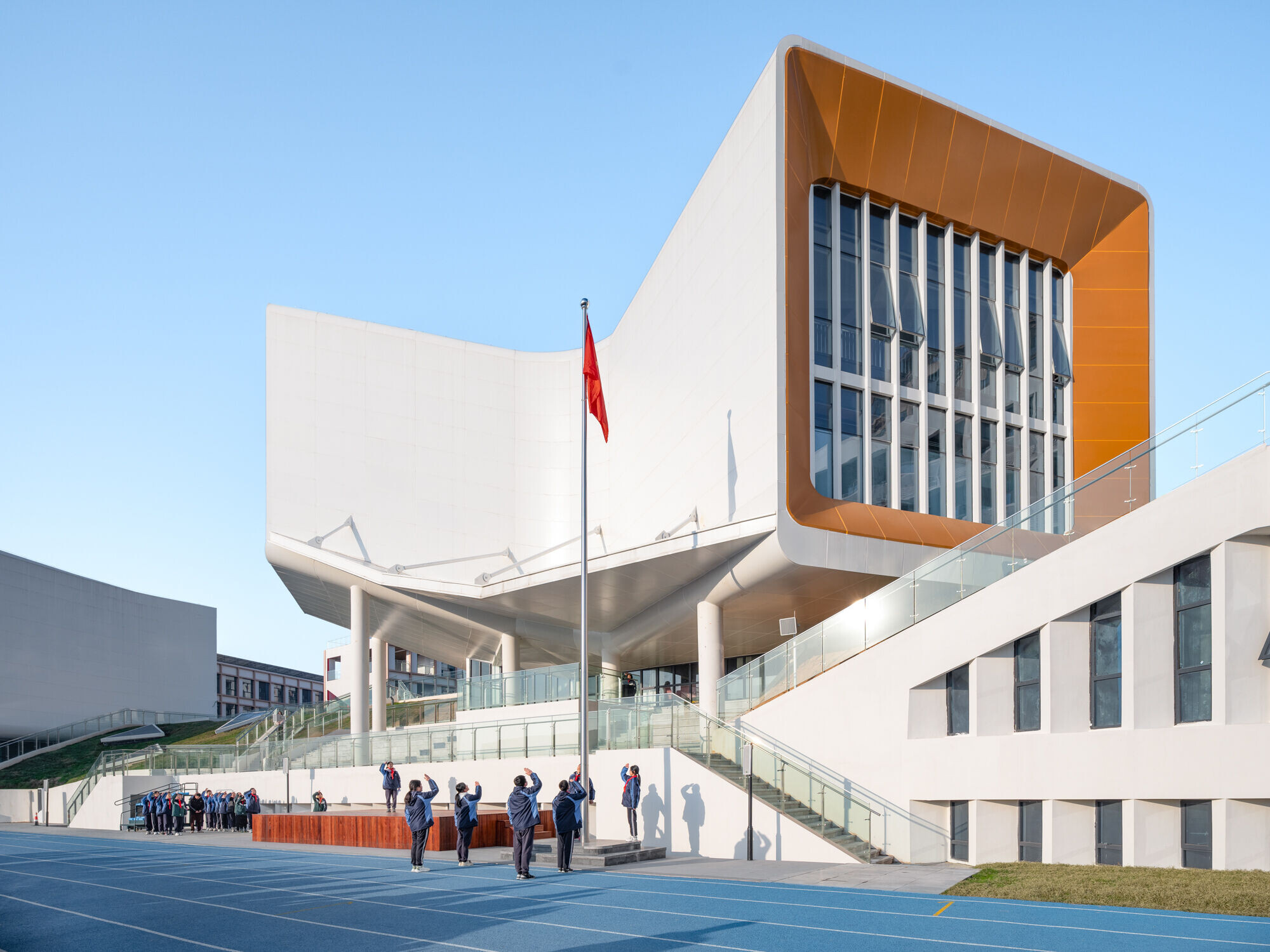
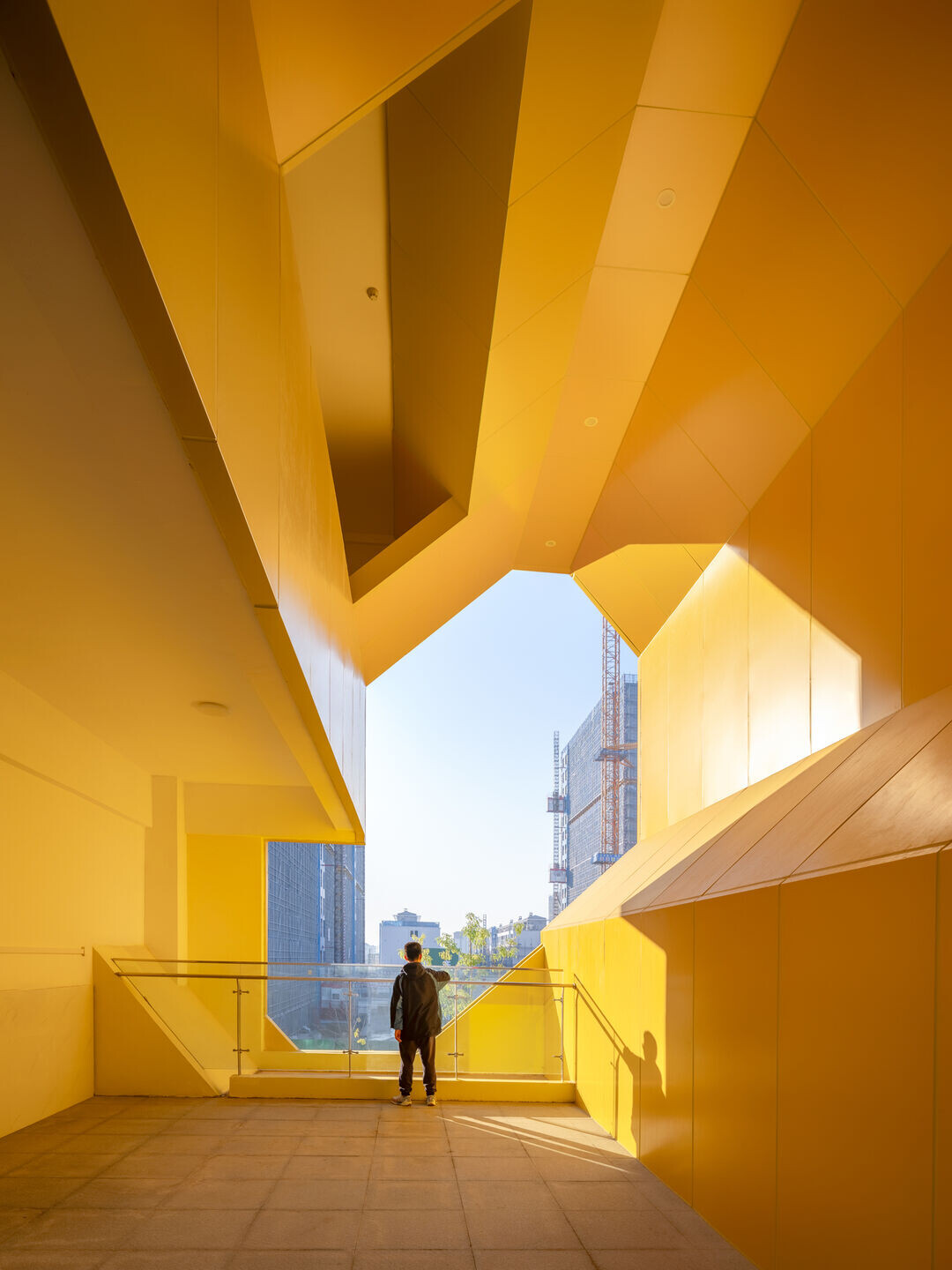
Conclusion
As education embraces greater diversity, the way we understand learning continues to evolve—and so does the architecture that supports it. At Quzhou No.6 Experimental School, introducing the “campus street” reimagines how students move, connect, and engage within a learning environment. By linking formal and informal spaces, structured programs, and spontaneous moments, the design creates a vibrant setting where exploration, communication, and growth can take root every day.
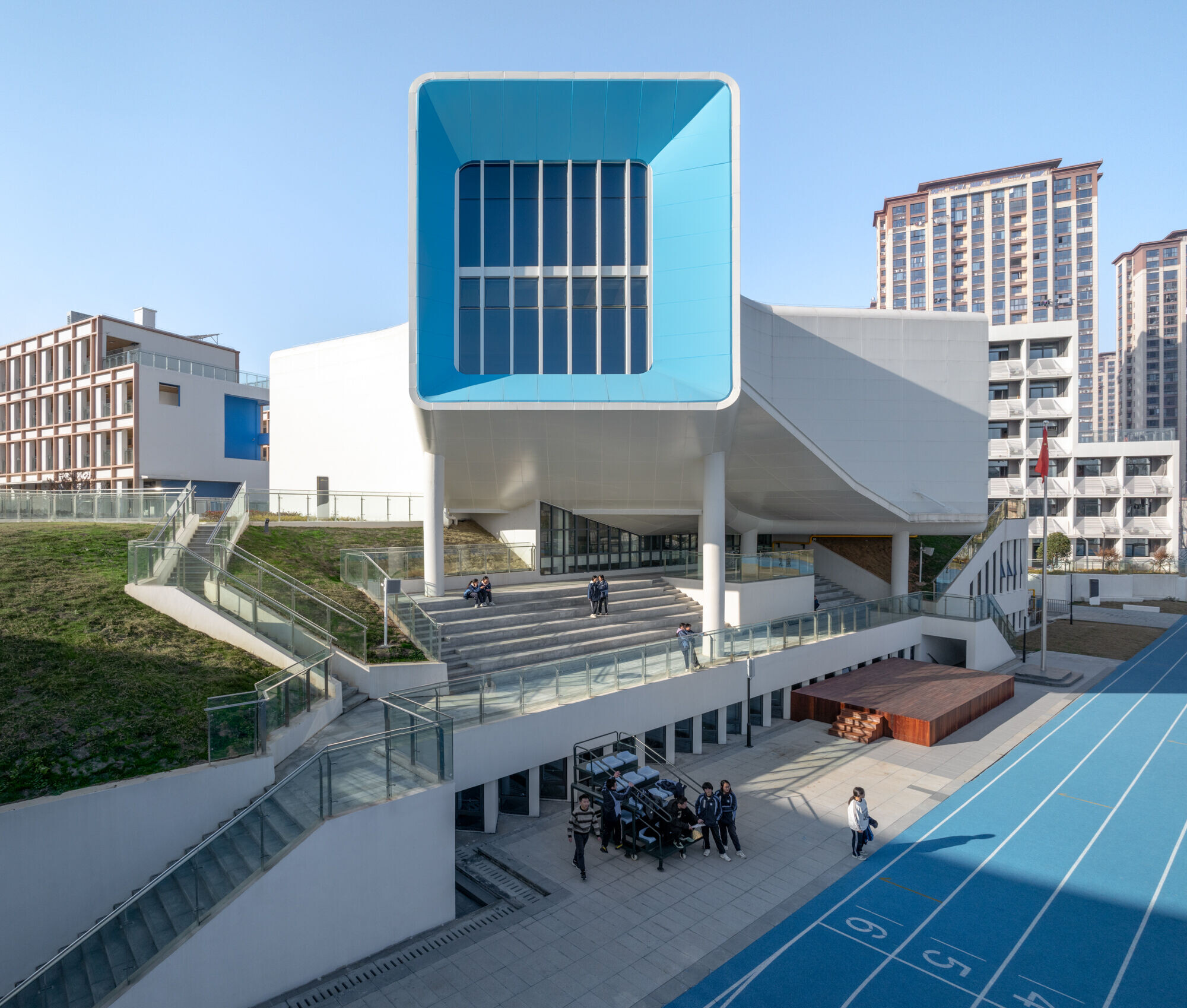

Team:
Client: Quzhou West District Investment Co., Ltd
Architecture Design: LYCS Architecture
Design Team: RUAN Hao, ZHAN Yuan; YU Zhiqiang, ZHAO Lin, YUAN Jiani, DUAN Qin, YUAN Congyuan, TANG Zhumiao, ZHANG Jingyi, HANG Gaofeng, ZHOU Feixia, YIN Yue, SHEN Chenglong, CHEN Qingshun, RUAN Ziming
Landscape Design: GM LANDSCAPE DESIGN
Cooperative Design Institute: Tianran Design Group
Contractor: China Machinery Industry Construction Group Inc.
Photography: Shan-Jian Images
